10g
Showing 751–800 of 817 results
-

Sodium Dichloroacetate
$68.15 Add to cart View Product DetailsSodium Dichloroacetate
-

Sodium Hydroxide-d, 99+ Atom Percent D, 40 Percent (w/w) solution in D2O
$117.39 Add to cart View Product DetailsSodium Hydroxide-d, 99+ Atom Percent D, 40 Percent (w/w) solution in D2O
-
![Sodium Tetraphenylborate, [Precipitation reagent for K]](https://advatechgroup.com/wp-content/plugins/woocommerce/assets/images/xplaceholder.webp.pagespeed.ic.ANHCL-f_RA.webp)
Sodium Tetraphenylborate, [Precipitation reagent for K]
$131.24 Add to cart View Product DetailsSodium Tetraphenylborate, [Precipitation reagent for K]
-

Sodium Tetraphenylborate, Reagent, ACS
$86.92 Add to cart View Product DetailsSodium Tetraphenylborate, Reagent, ACS
-

Spectinomycin Dihydrochloride Pentahydrate
$189.04 Add to cart View Product DetailsSpectinomycin Dihydrochloride Pentahydrate
-

Stevioside
$324.92 Add to cart View Product DetailsStevioside
-

Sudan Red 7B
$99.46 Add to cart View Product DetailsSudan Red 7B
-
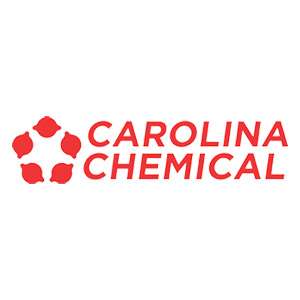
Tadalafil Powder – 10G
$45.08 Add to cart View Product DetailsCAS Number 171596-29-5 Molecular Weight 389.40Molecular Formula C22H19N3O4 -

Tetrabutylammonium Fluoride, Hydrate
$120.72 Add to cart View Product DetailsTetrabutylammonium Fluoride, Hydrate
-

Tetrabutylammonium Trifluoromethanesulfonate
$103.44 Add to cart View Product DetailsTetrabutylammonium Trifluoromethanesulfonate
-
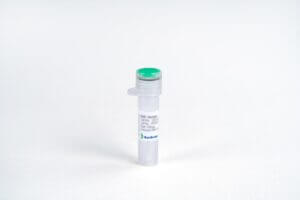
TGF-α, Human
$43.13 Add to cart View Product DetailsTransforming Growth Factor-alpha (TGF-α) , also known as sarcoma growth factor, TGF-type I and ETGF, is a member of the EGF family of cytokines. It is expressed in monocytes, brain cells, keratinocytes and various tumor cells. TGF-α signals through EGFR and acts synergistically with TGF-beta to promote the proliferation of a wide range of epidermal and epithelial cells. TGF-α is a transforming growth factor that is a ligand for the epidermal growth factor receptor, which activates a signaling pathway for cell proliferation, differentiation and development. This protein may act as either a transmembrane-bound ligand or a soluble ligand. The biological actions of TGF-α and EGF are similar. For instance, TGF-α and EGF bind to the same receptor. When TGF-α binds to EGFR it can initiate multiple cell proliferation events.
-

TGF-β 1, Mouse
$194.06 Add to cart View Product DetailsTransforming growth factor beta 1 (TGFβ1) is the prototype of a growing superfamily of peptide growth factors and plays a prominent role in a variety of cellular processes, including cell-cycle progression, cell differentiation, reproductive function, development, motility, adhesion, neuronal growth, bone morphogenesis, wound healing, and immune surveillance. TGF-β1, TGF-β2 and TGF-β3 signal via the same heteromeric receptor complex, consisting of a ligand binding TGF-β receptor type II (TβR-II), and a TGF-β receptor type I (TβR-I). Signal transduction from the receptor to the nucleus is mediated via SMADs. TGF-β expression is found in cartilage, bone, teeth, muscle, heart, blood vessels, hematopoietic cells, lung, kidney, gut, liver, eye, ear, skin, and the nervous system.
-

TGF-β 2, Human
$194.06 Add to cart View Product DetailsTransforming growth factor beta-2 (TGF-β2) is a secreted protein which belongs to the TGF-beta family. It is known as a cytokine that performs many cellular functions and has a vital role during embryonic development. The precursor is cleaved into mature TGF-beta-2 and LAP, which remains non-covalently linked to mature TGF-beta-2 rendering it inactive. It is an extracellular glycosylated protein. It is known to suppress the effects of interleukin dependent T-cell tumors. Defects in TGFB2 may be a cause of non-syndromic aortic disease (NSAD).
-

TGF-β 2, Mouse
$194.06 Add to cart View Product DetailsTransforming growth factor beta 2 (TGF-β2) is a member of TGF-beta superfamily that shares a characteristic cysteine knot structure. Mice with TGF-β2 gene deletion show defects in development of cardiac, lung, craniofacial, limb, spinal column, eye, inner ear and urogenital systems. All TGF-β isoforms signal via the same heteromeric receptor complex, consisting of a ligand binding TGF-β receptor type II (TβR-II), and a TGF-β receptor type I (TβR-I). Signal transduction from the receptor to the nucleus is mediated via SMADs. TGF-β expression is found in cartilage, bone, teeth, muscle, heart, blood vessels, hematopoietic cells, lung, kidney, gut, liver, eye, ear, skin, and the nervous system.
-

TGF-β 3, Human
$194.06 Add to cart View Product DetailsTransforming growth factor beta 3(TGFB3) is a member of a TGF -β superfamily which is defined by their structural and functional similarities. TGFB3 is secreted as a complex with LAP. This latent form of TGFB3 becomes active upon cleavage by plasmin, matrix metalloproteases, thrombospondin -1, and a subset of integrins. It binds with high affinity to TGF- β RII, a type II serine/threonine kinase receptor. TGFB3 is involved in cell differentiation, embryogenesis and development. It is believed to regulate molecules involved in cellular adhesion and extracellular matrix (ECM) formation during the process of palate development. Without TGF-β3, mammals develop a deformity known as a cleft palate.
-
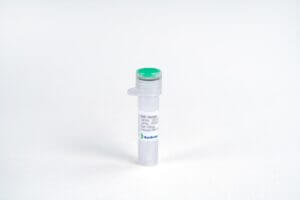
TGF-β1, Human
$146.63 Add to cart View Product DetailsTGF-β1 (transforming growth factor beta 1) is one of three closely related mammalian members of the large TGF-β1 superfamily that share a characteristic cystine knot structure. TGF-β1, -2 and -3 are highly pleiotropic cytokines that act as cellular switches to regulate processes such as immune function, proliferation and epithelial-mesenchymal transition. Each TGF-β isoform has some non-redundant function; for TGF-β1, mice with targeted deletion show defects in hematopoiesis and endothelial differentiation and died of overwhelming inflammation. TGF-β1 signaling begins with high-affinity binding to a type II ser/thr kinase receptor termed TGF-β RII. This receptor then phosphorylates and activates a second ser/thr kinase receptor, TGF-β RI (also called activin receptor‑like kinase (ALK)-5), or alternatively, ALK-1. This complex phosphorylates and activates Smad proteins that regulate transcription.
-

TGFβ1, Bovine
$142.31 Add to cart View Product DetailsTGF-β1 (transforming growth factor beta 1) is one of three closely related mammalian members of the large TGF-β1 superfamily that share a characteristic cystine knot structure. TGF-β1, -2 and -3 are highly pleiotropic cytokines that act as cellular switches to regulate processes such as immune function, proliferation and epithelial-mesenchymal transition. Each TGF-β isoform has some non-redundant function; for TGF-β1, mice with targeted deletion show defects in hematopoiesis and endothelial differentiation and died of overwhelming inflammation. TGF-β1 signaling begins with high-affinity binding to a type II ser/thr kinase receptor termed TGF-β RII. This receptor then phosphorylates and activates a second ser/thr kinase receptor, TGF-β RI (also called activin receptor‑like kinase (ALK)-5), or alternatively, ALK-1. This complex phosphorylates and activates Smad proteins that regulate transcription.
-

Thionin Acetate
$303.70 Add to cart View Product DetailsThionin Acetate
-

Tiron, Powder, Reagent
$31.83 Add to cart View Product DetailsTiron, Powder, Reagent
-

Titanium (III) Oxide, -100 Mesh
$250.63 Add to cart View Product DetailsTitanium (III) Oxide, -100 Mesh
-

TNF R I, Human
$68.14 Add to cart View Product DetailsTNF Receptor Type I, is also known as TNF R-p55/p60 and TNFRSF1A. It is a type I transmembrane protein member of the TNF receptor superfamily. It is expressed in most cell types. Binding of either TNF-α or TNF-β to TNF-R1 initiates a signal transduction pathway that results in the activation of the transcription factor NF-κB, whose target genes are involved in the regulation of inflammatory responses, and, in certain cells, induce apoptosis. TNF-R1 is essential for proper development of lymph node germinal centers and Peyer’s patches and for combating intracellular pathogens such as Listeria. It is stored in the Golgi and translocates to the cell surface following proinflammatory stimuli.
-

TNF-α (80-235aa), Mouse
$43.13 Add to cart View Product DetailsTumor Necrosis Factor-Alpha (TNF-alpha) plays a major role in growth regulation, differentiation, inflammation, viral replication, tumorigenesis, and autoimmune disease. Besides inducing hemorrhagic necrosis of tumors, TNF has been found to be involved in tumorigenesis, tumor metastasis, viral replication, septic shock, fever, inflammation, and autoimmune diseasesuch as Crohn’s disease, rheumatoid arthritis and graft-versus-host disease. TNF alpha-1a is a potent lymphoid factor that exerts cytotoxic effects on a wide range of tumor cells and certain other target cells.
-

TNF-α, Bovine
$63.83 Add to cart View Product DetailsTumor Necrosis Factor-Alpha (TNF-α) plays a major role in regulating growth, differentiation, inflammation, viral replication, tumorigenesis, and autoimmune diseases. TNF alpha-1a is a potent lymphoid factor that exerts cytotoxic effects on a wide range of tumor cells. In addition to inducing hemorrhagic necrosis of tumors, studies indicate TNF is involved in tumor igenesis, tumor metastasis, viral replication, septic shock, fever, inflammation, Crohn’s disease, rheumatoid arthritis and graft-versus-host disease.
-

TNF-α, His, Human
$51.75 Add to cart View Product DetailsTumor Necrosis Factor-Alpha (TNF-alpha) plays a major role in growth regulation, differentiation, inflammation, viral replication, tumorigenesis, and autoimmune diseases. Besides inducing hemorrhagic necrosis of tumors, TNF has been found to be involved in tumorigenesis, tumor metastasis, viral replication, septic shock, fever, inflammation, and autoimmune diseases including Crohn’s disease, and rheumatoid arthritis as well as graft-versus-host disease. TNF alpha-1a is a potent lymphoid factor that exerts cytotoxic effects on a wide range of tumor cells and certain other target cells.
-

TNF-α, Human
$50.03 Add to cart View Product DetailsTumor Necrosis Factor-alpha (TNF-a) is a homotrimer with a subunit molecular mass of 17.3 kDa. Tumor Necrosis Factor-alpha(TNF-a) plays a major role in growth regulation, differentiation, inflammation, viral replication, tumorigenesis, and autoimmune diseases; and in viral, bacterial, fungal, and parasitic infections. Besides inducing hemorrhagic necrosis of tumors, TNF has been found to be involved in tumorigenesis, tumor metastasis, viral replication, septic shock, fever, inflammation, and autoimmune diseases including Crohn’s disease, and rheumatoid arthritis as well as graft-versus-host disease.
-

TNF-α, Human (P. pastoris-expressed)
$51.75 Add to cart View Product DetailsTumor Necrosis Factor-Alpha (TNF-alpha) plays a major role in growth regulation, differentiation, inflammation, viral replication, tumorigenesis, and autoimmune diseases. Besides inducing hemorrhagic necrosis of tumors, TNF has been found to be involved in tumorigenesis, tumor metastasis, viral replication, septic shock, fever, inflammation, and autoimmune diseases including Crohn’s disease, and rheumatoid arthritis as well as graft-versus-host disease. TNF alpha-1a is a potent lymphoid factor that exerts cytotoxic effects on a wide range of tumor cells and certain other target cells.
-
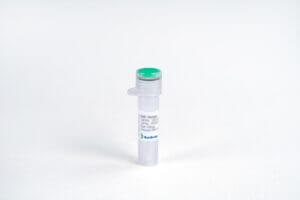
TNF-α, Porcine
$43.13 Add to cart View Product DetailsTumor Necrosis Factor-Alpha (TNF-alpha) plays a major role in growth regulation, differentiation, inflammation, viral replication, tumorigenesis, and autoimmune disease. Besides inducing hemorrhagic necrosis of tumors, TNF has been found to be involved in tumorigenesis, tumor metastasis, viral replication, septic shock, fever, inflammation, and autoimmune disease including Crohn’s disease, rheumatoid arthritis and graft-versus-host disease. TNF alpha-1a is a potent lymphoid factor that exerts cytotoxic effects on a wide range of tumor cells and certain other target cells.
-

TNF-α, Rat
$51.75 Add to cart View Product DetailsTumor Necrosis Factor-Alpha (TNF-alpha) plays a major role in growth regulation, differentiation, inflammation, viral replication, tumorigenesis, and autoimmune disease. Besides inducing hemorrhagic necrosis of tumors, TNF has been found to be involved in tumorigenesis, tumor metastasis, viral replication, septic shock, fever, inflammation, and autoimmune disease including Crohn’s disease, rheumatoid arthritis and graft-versus-host disease. TNF alpha-1a is a potent lymphoid factor that exerts cytotoxic effects on a wide range of tumor cells and certain other target cells.
-

TNF-β, Human
$63.83 Add to cart View Product DetailsTNF is secreted by macrophages, monocytes, neutrophils, T-cells, NK-cells following their stimulation by bacterial LPS. Cells expressing CD4 secrete TNF-alpha while CD8 cells secrete little or no TNF-alpha. The synthesis of TNF-alpha is induced by many different stimuli including interferons, IL2, GM-CSF. TNF-β is a potent mediator of inflammatory and immune responses. It belongs to the TNF family of ligands, and signals through TNFR1 and TNFR2. TNF-β is produced by activated T and B lymphocytes, and has similar activities to TNF-α. It mediates a large variety of inflammatory, immunostimulatory, and antiviral responses.
-

Toluene-d8, 99.6 Atom Percent D
$323.12 Add to cart View Product DetailsToluene-d8, 99.6 Atom Percent D
-

Toluidine Blue O
$110.02 Add to cart View Product DetailsToluidine Blue O
-

TPO, His, Human
$194.06 Add to cart View Product DetailsThrombopoietin (TPO) is a glycoprotein hormone which belongs to the EPO/TPO family. It produced by the liver and kidney which regulates the production of platelets. TPO stimulates the production and differentiation of megakaryocytes, the bone marrow cells that bud off large numbers of platelets. Lineage-specific cytokine affects the proliferation and maturation of megakaryocytes from their committed progenitor cells. It acts at a late stage of megakaryocyte development. It may be the major physiological regulator of circulating platelets.
-

TPO, Mouse
$86.25 Add to cart View Product DetailsThrombopoietin (TPO), also known as C-mpl ligand, MGDF and Thpo, is a glycoprotein hormone belonging to the EPO/TPO family. It is expressed mainly in the liver, kidney and skeletal muscle. TPO binds and signals through MLP/C_MPL receptor. It stimulates the proliferation and maturation of megakaryocytes from their committed progenitor cells, and it regulates the production and circulation of platelets. TPO has also been reported to promote the apoptosis of hypoxia-sensitized neurons and to inhibit neuronal differentiation.
-
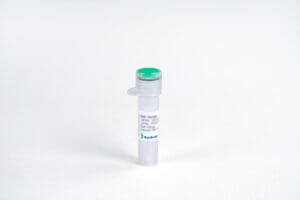
TRAIL, Mouse
$43.13 Add to cart View Product DetailsTNF-related apoptosis-inducing ligand (TRAIL), also known as Tumor Necrosis Factor Super-Family 10 (TNFSF10) or apoptosis 2 ligand (Apo2L), is a pleiotropic cytokine thatbelongs to the TNF superfamily. Full length TRAIL expressed in vivo is a type II transmembrane protein, although the soluble form also exists and functions. TRAIL has four major receptors: two death receptors DR4 and DR5, and two decoy receptors DcR1 and DcR2. TRAIL binds to the death receptors which recruits the FAS-associated death domain and activates caspases 8 and 10 which eventually leads to apoptosis. Because of its antitumor potential, TRAIL is activelystudied as a therapeutic agent. On the other hand, abnormal expression of TRAIL in small arteries can induce the proliferation of smooth muscle cells, thereby increasing vascular remodeling and pulmonary arterial hypertension.
-

TRAIL/Apo2L, Human
$43.13 Add to cart View Product DetailsTRAIL/Apo2L, also known as Tumor Necrosis Factor Super-Family 10 (TNFSF10), is a pleiotropic cytokine thatbelongs to the TNF superfamily. The full length TRAIL expressed in vivo is a Type II transmembrane protein, although the soluble form also exists and functions. TRAIL has four major receptors: two death receptors DR4 and DR5, two decoy receptors DcR1 and DcR2. TRAIL binds to the death receptors, recruits the FAS-associated death domain, activates caspases 8 and 10, and eventually leads to apoptosis. Because of its antitumor potential, TRAIL is actively studied as a therapeutic agent. On the other hand, abnormal expression of TRAIL in small arteries can induce the proliferation of smooth muscle cells, resulting in increasing vascular remodeling and pulmonary arterial hypertension.
-

trans-4-Aminocyclohexanol Hydrochloride
$65.55 Add to cart View Product DetailsMolecular Formula : C6 H13 N O . Cl H
-

trans,trans-Farnesol
$265.25 Add to cart View Product Detailstrans,trans-Farnesol
-

Trazodone Hydrochloride Powder – 10G
$20.24 Add to cart View Product DetailsCAS Number 25332-39-2 Molecular Weight 408.32 Molecular Formula C19H22ClN5O · HCl -

Triamcinolone Acetonide, Powder, USP
$956.63 Add to cart View Product DetailsTriamcinolone Acetonide, Powder, USP
-

Tricaprin
$156.43 Add to cart View Product DetailsTricaprin
-

Triethylene Glycol Bis(p-toluenesulfonate)
$95.89 Add to cart View Product DetailsTriethylene Glycol Bis(p-toluenesulfonate)
-

Trifluoroacetic Acid-d, 99.5 Atom Percent D
$140.61 Add to cart View Product DetailsTrifluoroacetic Acid-d, 99.5 Atom Percent D
-

Trifluoromethanesulfonic Acid
$42.90 Add to cart View Product DetailsTrifluoromethanesulfonic Acid
-

Trifluoromethanesulfonic Anhydride
$68.15 Add to cart View Product DetailsTrifluoromethanesulfonic Anhydride
-
![Trimethyl[3-(trimethoxysilyl)propyl]ammonium Chloride, (ca. 50 Percent in Methanol)](https://advatechgroup.com/wp-content/plugins/woocommerce/assets/images/xplaceholder.webp.pagespeed.ic.ANHCL-f_RA.webp)
Trimethyl[3-(trimethoxysilyl)propyl]ammonium Chloride, (ca. 50 Percent in Methanol)
$54.23 Add to cart View Product DetailsTrimethyl[3-(trimethoxysilyl)propyl]ammonium Chloride, (ca. 50 Percent in Methanol)
-

TrkA, Human
$43.13 Add to cart View Product DetailsTyrosine kinase receptor A (Trk-A) is a member of the neurotrophic tyrosine kinase receptor family which includes three members: Trk-A, Trk-B and Trk-C. Trk-A is involved in the development and maturation of the central and peripheral nervous systems through regulation of proliferation, differentiation and survival of sympathetic neurons.
-

Tropicamide
$225.84 Add to cart View Product DetailsTropicamide
-

TSLP, Human
$163.88 Add to cart View Product DetailsTSLP is a hemopoietic protein that is expressed in the heart, liver and prostate. TSLP overlaps biological activities with IL-7 and binds with the heterodimeric receptor complex consisting of the IL-7R alpha chain (IL-7Rα) and the TSLP-specific chain (TSLPR). Like IL-7, TSLP induces phosphorylation of STAT3 and STAT5, but uses kinases other than the JAKs for activation. TSLP prohibited apoptosis and stimulated growth of the human acute myeloid leukemia (AML)-derived cell line MUTZ3. It induces the release of T cell-attracting chemokines TARC and MDC from monocytes and activates CD11c(+) dendritic cells (DCs). TSLP activated DCs primed naive T cells to produce the proallergic cytokines (IL-4, IL-5, IL-13, TNFα) while down-regulating IL-10 and IFN-γ suggesting a role in initiating allergic inflammation.
-

TWEAK, Human
$63.83 Add to cart View Product DetailsTWEAK, short for TNF-related weak inducer of apoptosis, is also known as TNFSF12 and DR3LG. It is a type II transmembrane protein belonging to the TNF superfamily. It is expressed widely in many tissues, such as the heart, skeletal muscle, spleen and peripheral blood. Binding of TWEAK to its receptor TWEAKR induces NF-κB activation, chemokine secretion and apoptosis in certain cell types. TWEAK has also been reported to promote endothelial cell proliferation and migration, thus serving as a regulator of angiogenesis.
-

United Scientific® HEXAGONAL MASS, 10G
$0.63 Add to cart View Product DetailsHEXAGONAL MASS, 10G






